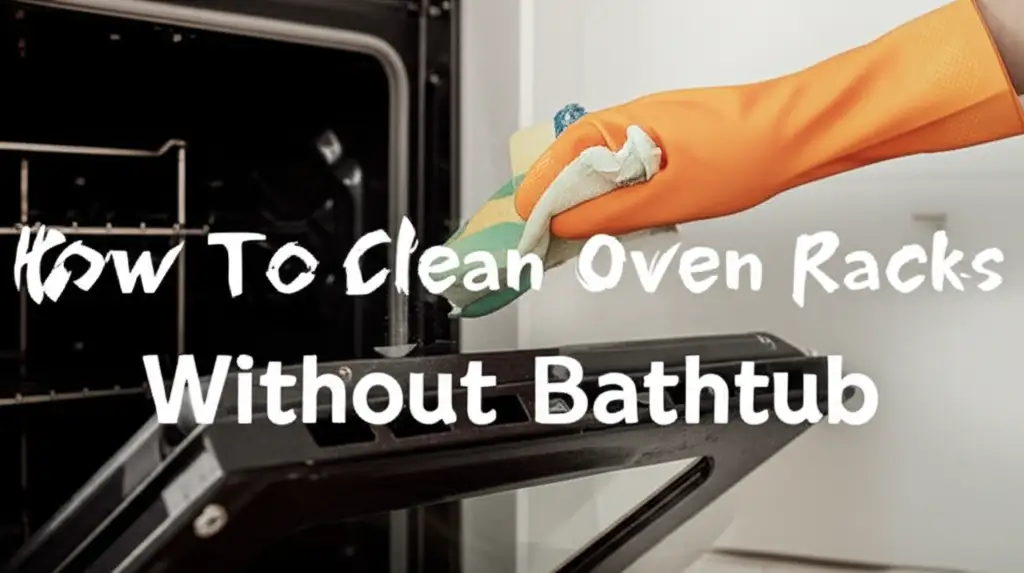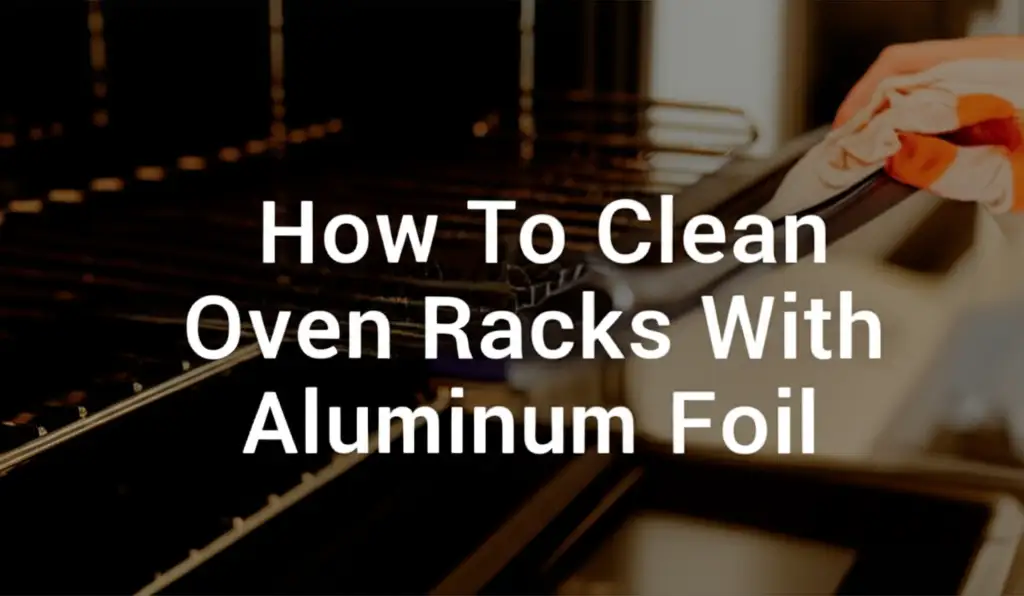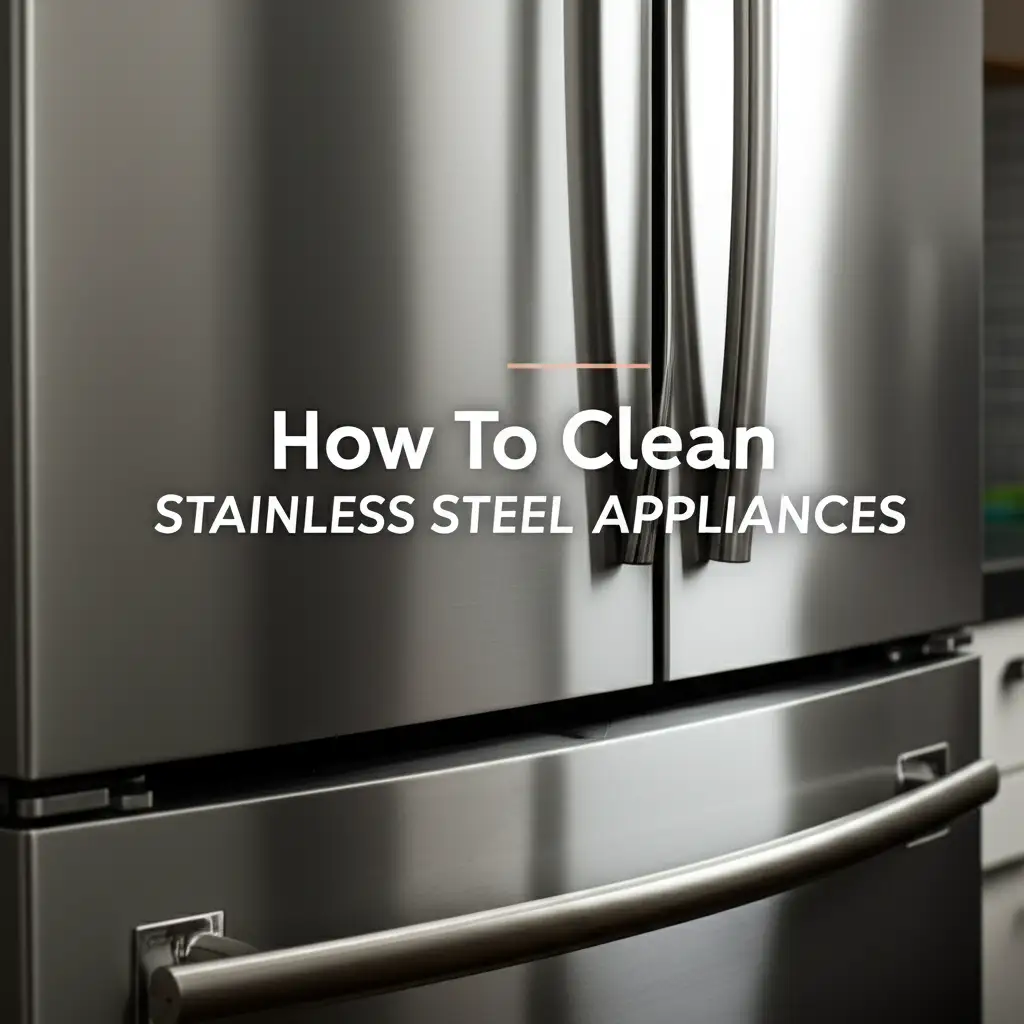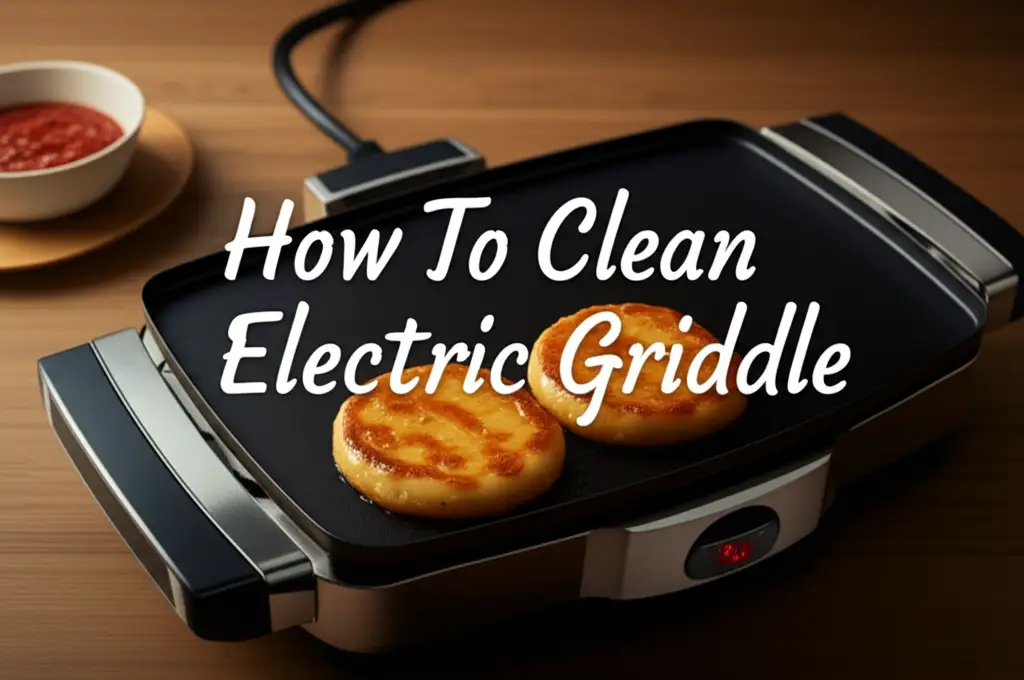· Home Cleaning · 15 min read
How To Clean Oven Racks Without Bathtub

How to Clean Oven Racks Without a Bathtub
Cleaning oven racks can feel like a big job. They collect burnt food and grease over time. Many cleaning guides suggest soaking them in a bathtub. But what if you do not have a bathtub? Or what if you prefer not to use it for cleaning kitchen items? You are in luck.
You can still get your oven racks sparkling clean. I have faced this challenge in my small kitchen. I found many effective ways to clean oven racks without a bathtub. These methods use common household items. They require less space and effort than you might think. This article explores several smart ways to tackle tough oven rack grime. We will cover methods using baking soda, ammonia, and other powerful cleaners. Get ready to transform your dirty racks into shiny ones.
Takeaway
- Use baking soda and vinegar for an effective, eco-friendly soak in a sink or large bin.
- Try the ammonia bag method for stubborn grime, ensuring good ventilation.
- Dishwasher detergent pods offer a strong degreasing solution for soaking.
- Bar Keepers Friend provides abrasive power for tough, stuck-on messes.
- Prevent heavy buildup with regular wiping and quick spot cleaning.
Clear, Concise Answer
You can effectively clean oven racks without a bathtub by using a large sink, utility tub, or even heavy-duty trash bags for soaking. Common solutions include baking soda and vinegar, ammonia, dishwasher detergent pods, or specialized cleaners like Bar Keepers Friend.
The Power of Baking Soda and Vinegar for Oven Racks
Baking soda and vinegar create a powerful cleaning duo. This combination is excellent for breaking down grease and baked-on food. It is also safe for most oven rack materials. You do not need a bathtub for this method. A large sink, utility tub, or even a sturdy storage container works well. This approach is my favorite for many cleaning tasks.
Preparation and Application
First, remove your oven racks from the oven. Scrape off any large, loose food particles. You can use a spatula or old credit card for this. Place the racks in your chosen container. Make sure the container is large enough to submerge them fully or partially. If you cannot submerge them completely, you will need to flip them later.
Next, sprinkle a generous amount of baking soda over the racks. Cover all greasy and grimy areas. Aim for a thick layer. Then, slowly pour white vinegar over the baking soda. You will see it fizz and foam. This chemical reaction helps lift stubborn grime. The fizzing action is a key part of the cleaning process.
Soaking and Scrubbing
Let the racks soak for at least several hours. For very dirty racks, an overnight soak works best. The longer they soak, the easier the grime comes off. I often prepare this before bed. This lets the mixture do its work while I sleep. After soaking, drain the dirty water. Use a stiff brush or a non-scratch scrub pad to clean the racks. The softened grime should come off with less effort.
Rinse the racks thoroughly under running water. Ensure all baking soda residue is gone. You might need to repeat the process for extremely stubborn spots. This method is effective and uses common household items. It is also environmentally friendly. For general oven cleaning tips that use baking soda, refer to our guide on how to clean oven with baking soda. Combining vinegar with baking soda enhances their cleaning power, a technique explored further in how to clean with vinegar and baking soda.
Ammonia: A Potent Solution for Stubborn Grime
Ammonia is a strong degreaser. It can dissolve very tough, baked-on grease and carbon deposits from oven racks. This method is highly effective but requires caution. Always use ammonia in a well-ventilated area. Avoid breathing its fumes directly. I always open windows wide when I use ammonia.
Safety First
Before starting, gather your safety gear. You need rubber gloves and eye protection. Work in a place with plenty of fresh air. A garage or outdoor space is ideal. If you must work indoors, open all windows and turn on exhaust fans. Never mix ammonia with bleach or other cleaning products. This creates dangerous fumes.
The Bag Method for Oven Racks
For this method, you will need large, heavy-duty trash bags. Construction bags work best because they are thicker. Place one oven rack into a trash bag. Pour about 1/2 to 1 cup of ammonia into the bag. Make sure the liquid does not splash. Seal the bag tightly, trapping the ammonia fumes inside. The fumes do the cleaning, not the liquid directly soaking the rack. Repeat for each rack.
Place the sealed bags outdoors or in a garage for 12-24 hours. The fumes will loosen the grime without much physical effort. After the soaking period, carefully open the bags in a well-ventilated area. Remove the racks and rinse them thoroughly with hot water. Scrub any remaining residue with a stiff brush or steel wool. The grime should wipe away easily. This method is excellent for neglected racks. For a more detailed guide on this powerful technique, see our article on how to clean oven racks with ammonia.
Dishwasher Detergent Pods for Deep Cleaning
You might be surprised to learn that dishwasher detergent pods can deep clean oven racks. These pods contain powerful degreasers and enzymes. They are designed to break down tough food residues in hot water. This method is simple and effective. It is perfect when you need a strong clean without harsh chemicals or fumes. I find it convenient because most homes already have dishwasher pods.
Simple Soaking Technique
Start by finding a large container or basin. A laundry tub, a large plastic storage bin, or even your kitchen sink can work. Ensure it can hold your oven racks. Fill the container with very hot water. The hotter the water, the better the pods will dissolve and activate. Drop in one or two dishwasher detergent pods per rack. Allow the pods to dissolve completely in the hot water. Swirl the water to help them along.
Carefully place your oven racks into the hot, soapy water. Make sure they are fully submerged if possible. If not, you will need to flip them halfway through the soaking period. Let the racks soak for at least 4-6 hours. For very greasy or burnt-on racks, an overnight soak works best. The detergent will penetrate and loosen the grime.
When to Use This Method
This method is ideal for racks with heavy grease buildup. It works well for racks that have not been cleaned in a long time. After soaking, drain the water. Use a stiff brush or a heavy-duty sponge to scrub off the remaining grime. The softened residue should come off easily. Rinse the racks thoroughly with clean water. Dry them completely before putting them back in the oven. This prevents rust. This method offers strong cleaning power without needing specialized oven cleaners. It is a smart use for a common kitchen item.
Bar Keepers Friend: Abrasive Power for Oven Racks
Bar Keepers Friend is a versatile cleaning product. It contains oxalic acid, which makes it effective at removing rust, hard water stains, and tough grime. It is an excellent choice for cleaning metal surfaces. This includes oven racks. Its mild abrasive quality helps scrub away baked-on messes. I often turn to this product for really stubborn spots.
Applying the Cleanser
Begin by making sure your oven racks are damp. You can rinse them briefly under warm water. Sprinkle Bar Keepers Friend powder directly onto the racks. Focus on the areas with the most grime and burnt-on residue. You can also mix the powder with a little water to form a paste. Apply this paste evenly over the dirty areas.
Let the product sit on the racks for a few minutes. This gives the oxalic acid time to work on the stains. Do not let it dry completely. For tough spots, you might need to re-dampen the area. This ensures the product stays active.
Scrubbing and Rinsing
After a few minutes, use a non-scratch scouring pad or a stiff brush to scrub the racks. Work in small sections. Apply gentle pressure and watch the grime lift away. The mild abrasive nature of Bar Keepers Friend helps scrape off sticky residues. If the grime is very tough, you can reapply the product and scrub again.
Once you have scrubbed all the racks, rinse them thoroughly with clean water. Make sure no powder residue remains. Dry the racks completely with a clean cloth. This method is especially good for racks with a lot of dark, baked-on stains. Bar Keepers Friend is safe for most stainless steel and chrome surfaces, making it ideal for oven racks. For more details on using this powerful cleaner, you can read our guide on how to clean oven racks with Bar Keepers Friend.
Alternative Methods and Quick Fixes
Sometimes you need a different approach for oven racks. Or maybe you just have light buildup. Several other methods can help clean your oven racks without a bathtub. These options offer flexibility depending on the level of dirt. They also use materials you might already have. I often use these for quick touch-ups or specific types of messes.
Using Aluminum Foil for Baked-On Messes
Aluminum foil can act as an abrasive scrubber. This method is great for baked-on food particles. It does not require soaking in a large tub. First, make sure your oven racks are dry. Crumple a piece of aluminum foil into a ball. You want a firm ball about the size of your fist. Apply a small amount of dish soap to the dirty areas of the rack.
Use the foil ball to scrub the grime. The aluminum foil is softer than steel wool, but still abrasive enough to remove stuck-on bits. It works especially well on carbonized residue. The dish soap helps lubricate and lift the grease. Rinse the racks thoroughly after scrubbing. This method is perfect for spot cleaning or when you want to avoid chemicals. Learn more about this innovative cleaning approach in our guide on how to clean oven racks with aluminum foil.
Steam Cleaning for Lighter Buildup
For lighter grease and food splashes, steam can be a surprising helper. This method loosens grime with heat and moisture. It is not for heavy buildup. You can use a handheld steam cleaner if you own one. Direct the steam nozzle at the oven racks. Let the steam penetrate the grime. Then, wipe away the loosened dirt with a cloth or sponge.
If you do not have a steam cleaner, you can create steam. Boil water in a large pot. Place the oven rack over the steaming water (do not immerse it). The steam will rise and soften the grime. Be careful with hot steam. Always use heat-resistant gloves. After a few minutes, wipe down the rack. This method is eco-friendly and avoids chemicals. It is ideal for regular maintenance or minor cleaning tasks.
Tips for Preventing Future Buildup
Cleaning oven racks can be a big job. The best way to make it easier is to prevent heavy buildup in the first place. Regular, small cleaning efforts save a lot of time later. A few simple habits can keep your racks much cleaner. I have learned that consistent maintenance makes a huge difference.
Regular Wipes and Spot Cleaning
After each use of your oven, let it cool down. Then, quickly wipe down the oven racks. Use a damp cloth or a sponge with a little dish soap. This removes fresh food spills and grease before they bake on. If you see a small spill, clean it immediately. A quick wipe takes seconds. Leaving it means it bakes on and becomes much harder to remove. This simple step prevents layers of grime from forming. Think of it like washing a dish right after using it.
For tougher spots that are still fresh, sprinkle a little baking soda on them. Add a few drops of water to create a paste. Let it sit for 15-30 minutes. Then, scrub with a sponge. This tackles small burnt-on areas before they become major problems. Regular spot cleaning reduces the need for deep cleaning. This also keeps your entire oven cleaner. For a deeper understanding of general oven cleanliness, explore our article on how to clean oil out of oven.
Using Oven Liners
Oven liners are thin, reusable sheets. You place them at the bottom of your oven. They catch drips and spills. This prevents food from baking onto the oven floor. Some liners are also designed to sit on top of the oven racks. These catch spills before they reach the racks themselves. Liners are easy to clean. You can usually wash them in the sink with dish soap.
Using oven liners significantly reduces the amount of grease and food that touches your racks. This means less scrubbing for you. They are a small investment that saves a lot of cleaning effort. Always ensure liners are heat-resistant and safe for your oven. Check your oven’s manual for specific recommendations. Maintaining your oven extends its life. You can also refer to our guide on how to clean oven after self-clean for comprehensive post-cleaning care.
Essential Tools and Safety Precautions
Cleaning oven racks effectively requires the right tools. It also demands attention to safety. Some cleaning agents can be harsh. Protecting yourself and your kitchen is important. Always read product labels before use. I always make sure I have my gear ready before I start any big cleaning task.
Must-Have Cleaning Supplies
- Gloves: Rubber gloves protect your hands from chemicals and hot water. They also provide a better grip on slippery racks.
- Stiff Brush or Non-Scratch Scrub Pad: These are essential for scrubbing away softened grime. Choose pads that will not scratch your oven racks. Steel wool can be used for very tough spots, but test it in an inconspicuous area first.
- Large Container or Basin: As discussed, this is your bathtub alternative. A laundry tub, a large plastic storage bin, or even a deep kitchen sink works.
- Heavy-Duty Trash Bags: These are crucial if you use the ammonia method. They must be strong enough not to tear.
- Clean Cloths or Paper Towels: For wiping down racks and drying them.
- Cleaning Agents: Baking soda, white vinegar, ammonia, dishwasher detergent pods, or Bar Keepers Friend, depending on your chosen method.
Having these items ready makes the cleaning process smoother. You will not have to stop midway to search for a tool.
Protecting Yourself and Your Kitchen
- Ventilation: Always work in a well-ventilated area, especially when using strong chemicals like ammonia. Open windows and doors. Use exhaust fans. Good airflow prevents fume buildup.
- Eye Protection: Wear safety glasses, especially when working with ammonia or strong cleansers. Splashes can happen.
- Avoid Mixing Chemicals: Never mix different cleaning products. This can create dangerous gases. For example, ammonia and bleach create toxic chloramine gas.
- Surface Protection: Place old towels or newspapers under your cleaning area. This protects your floors or countertops from spills and drips.
- Proper Disposal: Dispose of dirty water and used cleaning agents responsibly. Follow local guidelines.
- Test Spot: If unsure about a cleaner on your specific oven racks, test a small, hidden area first. This prevents damage to the finish.
By following these safety precautions, you ensure a safe cleaning experience. You also protect your home surfaces.
FAQ Section
Can I put oven racks in the dishwasher?
Most oven racks are safe to put in the dishwasher. However, they often take up too much space. Dishwashers also may not be powerful enough to remove very tough, baked-on grease. For light cleaning, a dishwasher can help. For deep cleaning, manual methods are usually better.
How often should I clean oven racks?
Clean your oven racks thoroughly every 3-6 months. This depends on how often you use your oven. For heavy use, clean them more frequently. Wiping down racks after each use prevents heavy buildup. This makes the deep cleaning process much easier.
What can I use if I do not have baking soda or vinegar?
You can use dishwasher detergent pods or Bar Keepers Friend. Heavy-duty degreasing sprays also work. For a simple dish soap soak, fill a container with hot water and add plenty of dish soap. Let the racks soak for several hours or overnight.
Are self-cleaning oven racks different to clean?
Some newer ovens have “self-cleaning” racks. These racks are designed to withstand the high heat of the oven’s self-clean cycle. You can often leave them inside during this cycle. Check your oven’s manual. If your racks are not self-cleaning, remove them before running the cycle to prevent damage.
Can I clean oven racks with a pressure washer?
No, do not use a pressure washer on oven racks. The high pressure can damage the rack’s finish. It can also warp the metal. Pressure washers are meant for outdoor, heavy-duty cleaning. Stick to manual scrubbing or soaking methods for oven racks.
How to remove burnt food from oven racks?
For burnt food, a long soak is best. Use baking soda and vinegar, ammonia, or dishwasher detergent pods. After soaking, scrape with a plastic scraper or a wadded aluminum foil ball. Bar Keepers Friend also works well for scrubbing off burnt residue.
Conclusion
Cleaning oven racks without a bathtub is absolutely possible. You have many effective options. You do not need a large space or special equipment. We explored powerful methods like the baking soda and vinegar soak. We also covered the ammonia bag trick for the toughest grime. Dishwasher detergent pods provide a convenient, strong solution. Bar Keepers Friend offers abrasive power for stubborn stains. Even aluminum foil and steam can help.
These methods help you achieve sparkling clean oven racks. They save you from messy bathtub struggles. Remember that consistent cleaning prevents future headaches. Regularly wipe down your racks. Consider using oven liners. By following these steps, you maintain a cleaner, more efficient kitchen. Your oven racks will look great. Keep your kitchen spotless with these proven, effective strategies. Start cleaning your oven racks today and enjoy a fresher kitchen!
- oven rack cleaning
- kitchen cleaning tips
- greasy oven racks
- no bathtub cleaning




